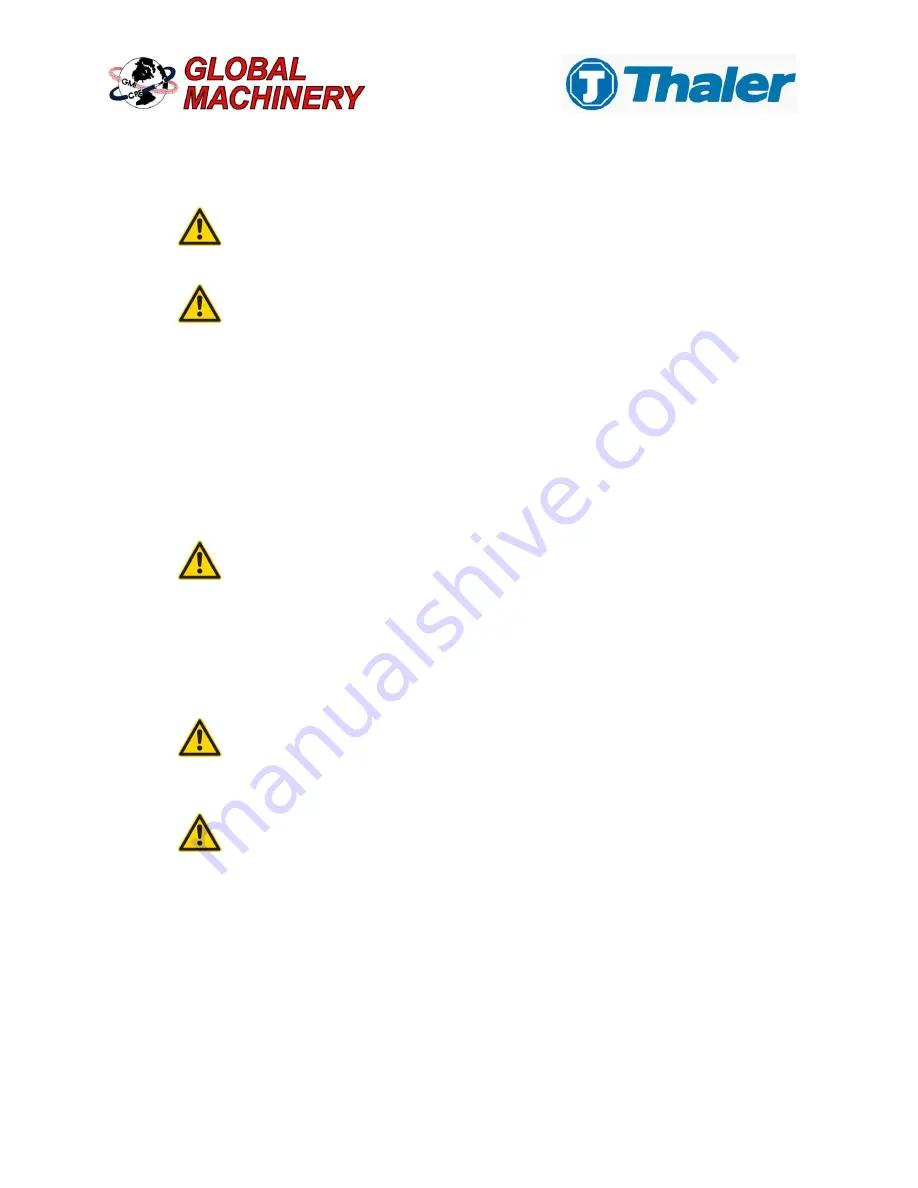
Page 7
2.3 Disconnecting the Winch:
Danger!
Uncoupling the winch without the use of wheel chocks may result in the
winch rolling away and potential injury or damage. Always use wheel chocks
under the wheels when disconnecting the winch.
Damage!
Remove the break-away cable and the trailer plug. Otherwise, damage to the
cable or plug may occur when the tow vehicle is pulled away from the trailer.
Make sure that the towing vehicle is properly uncoupled before driving away.
Place the wheel chocks under the wheels so that the winch is secured against rolling away. Release
the pin, lower the jack leg, and crank down the jack. Unplug the trailer plug cable and the break-
away cable from the towing vehicle. Store the cable into its holder, in order to protect the contacts
from dirt. Unhook the safety chains. Store the safety chains so that they do not hang on the ground.
Pull up the hitch lever and uncouple the winch by cranking the jack leg down. It is now safe to drive
away the towing vehicle.
2.4
Moving the Winch Manually:
If the winch rolls, DO NOT try to move it manually!
In a low light environment, or if weather conditions demand (for example in fog), the winch should
not be parked without lighting systems. Any further legal regulations have to be taken into
consideration.
2.5 Changing Tires and Adjusting Tire Pressure:
Danger!
If the winch is not secured against movement and starts to slip, and therefore
falls off the jack, a person can be injured, potentially causing death. Secure
the trailer against movement when changing the tires.
Danger!
If a person is under the vehicle during the wheel change and the winch falls
off the jack or the jack fails, the person can be injured, potentially resulting in
death.
It is forbidden to be under the lifted vehicle without jack stands or
other safety equipment to secure the winch.
Worn tires do not grip wet roads very well at high speeds and there is a higher risk of hydroplaning.
It is recommended that tires be changed when worn beyond serviceable condition.



























